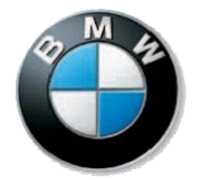BMW WAS BORN in the boom years of the aviation industry. Gustav Otto (son of Nikolaus Otto, the gas-engine pioneer) had founded an aircraft factory near Munich, Germany, in 1911, and in 1913 Karl Rapp started an aero-engine works nearby.

BMW 5 Series suspension In 1995 the third generation of BMW’s 5 Series used aluminum for the suspension and steering to offset the weight of structural improvements and slight increase in size.
After Rapp left, his company was reorganized as the Bayerische Motoren Werke (Bavarian Engine Works), or BMW. In 1917 BMW merged with the aircraft company, from which Otto had retired due to illness the previous year. BMW entered car manufacturing in 1929 after buying the Dixi company, which built Austin Sevens under license at a factory in Eisenach.
In 1932 BMW began producing its own cars, beginning with the 3/20 AM-1. The 303 of 1934 had a six-cylinder engine and was the first model with the twin kidney-shaped grille, which is still seen on BMWs today. The finest BMW of the inter-war years was the 328 sports car of 1936, which dominated European sports-car racing in the late 1930s.
During World War II BMW made cars, motorcycles, and aircraft engines for the German government, and its factories were severely damaged by Allied bombing. After the postwar division of Germany, the company’s Eisenach factory lay in the Soviet-controlled Eastern Zone.
Motorcycle and car production resumed, with vehicles being badged as EMW (Eisenacher Motoren Werke). The factory was later home to the long-running Wartburg marque, which endured until 1991. Cars based on BMW’s designs were also built in England by Bristol.
The Munich factory, in the Western Zone under Allied control, restarted motorcycle production in 1948. It then embarked on a range of luxury cars, beginning in 1951 with the 501. However, the 501 cost four times the average German salary, and even those who could afford it were more likely to buy a model from the more established Mercedes-Benz marque.
BMW’s V8-engined models, including the rapid 507 sports car, were equally impressive – and unprofitable. One notable success was the tiny Isetta “bubble car,” which had been launched in Italy in 1953. BMW bought the rights, fitted its own engine, and reintroduced it in 1955. More than 160,000 were built in eight years, and BMW followed it with a range of slightly larger cars for its increasingly prosperous clientele.

The company still struggled financially, and in 1959 it was nearly bankrupt. It was saved by the investment of the Quandt family, who installed a fresh management team. The first fruit of this successful management change was the Neue Klasse Series-starting with the 1500 of 1961-which at last put BMW on the road to financial security.
Crisp, square-jawed styling and new, overhead-cam engines made these cars extremely desirable. To meet the increased demand for the Neue Klasse cars, BMW needed more production capacity, so it took over Glas-an ailing car manufacturer at Dingolfing.
The New Six Series of six-cylinder luxury sedans and coupés expanded BMW’s range during the late 1960s, while the 5-Series, initiated in 1972, redefined the mid-range full-size or “executive” car by offering efficient engines, clean-cut styling, and class-leading safety.
Meanwhile, the 3.0CSL, a lightweight development of BMW’s New Six coupé, beat Ford’s RS Capri in the European Touring Car Championship. But the oil crisis of 1973 ensured that neither the road-going CSL nor a turbocharged 2002 unveiled that year were great successes. BMW also struggled with a supercar project, the M1, which began limited production in 1979.
Instead, BMW established a well-structured range during the 1970s, introducing the compact 3-Series in 1975, the 6-Series coupé in 1976, and the large 7-Series in 1977. A second-generation 5-Series followed in 1981, the same year that BMW became engine supplier to the Brabham Formula 1 team, providing it with a mighty 1.5-liter turbo. Based on the Neue Klasse engine of 1961, the turbo powered Nelson Piquet to the 1983 World Championship.
In the mid-1980s BMW installed the M1’s 24-valve engine into 5- and 6-Series cars to produce the rapid yet refined M-car Series. The engine was also tried in a 3-Series, but its weight ruined the handling. Instead, BMW engine boss Paul Rosche developed a 16-valve, four-cylinder engine for the M3 of 1988, which enabled the car to dominate touring-car racing grids just as the 328 had done half a century earlier.
In 1990 BMW provided the engine for the McLaren F1 road car, and in 1999 it won the Le Mans 24-hour race with Williams. The following year BMW developed a V10 Formula 1 engine for Williams, for whom it remained engine supplier until 2005. After breaking with Williams, BMW owned the Sauber Grand Prix team from 2006 to 2009.
BMW augmented its range from 2000 onward, with new generation 3-, 5-, and 7-Series models, Z-Series sports cars, and the X-Series SUVs. In 2001 design chief Chris Bangle restyled the cars with “flame surfacing”-using a car’s curves and angles to capture the essence of a burning flame. BMW had expanded its operations in the 1990s, buying Britain’s Rover Group in 1994 and the Rolls-Royce marque in 1998. It sold Rover in 2000 but kept the Mini brand, reinventing it in 2001 with spectacular success.
Two years later BMW set up a new Rolls-Royce factory at Goodwood, southeast England. Despite poor market conditions in recent years, BMW’s sales have held up well, its core models bolstered by new technology such as stop-start and mild-hybrid systems. Introduced in 2007 as “Efficient Dynamics,” these systems automatically turn off the engine when it is not needed to save fuel.

BMW 328 Produced from 1936 to 1940, the 328 was one of the finest sports cars of its time. It had a beautifully styled streamlined body, a light tubular frame, and a 1,971 cc, six-cylinder engine with hemispherical combustion chambers.